Welcome to the Tarot Blog Hop!
An international group of tarotists are all writing on the same topic and then linking to each other so that the reader can hop from one blog to the next, seeing all the permutations and facets that the topic inspired in different writers.
Morgan Drake Eckstein of Gleamings from the Golden Dawn provided the theme for this hop, Junk Mail Tarot. Morgan invited us to go through our junk mail and magazines to uncover images that we could use as or incorporate into tarot cards.
PREVIOUS | MASTER LIST | NEXT
Junk Mail Tarot
I don’t get that much junk mail, but after some digging I unearthed a catalog from Vistaprint, a brochure from Lighthouse Writers Workshop, plus an old Catalyst magazine from the Denver Museum of Nature and Science. Oh, and a University of Northern Colorado alumni magazine, which featured a beaker of beer on the front, with the bold headline “Science.” (No wonder I never could get a job and became a tarot reader out of sheer desperation!) In addition, I had several National Geographics lying around from some previous, aborted tarot collage projects. Worried I didn’t have anything useful, I also grabbed a bunch of free magazines when I was out for dinner one night. After reviewing all these extensively, and finding quite a number of usable images, I was most interested–not surprisingly–by the Nat Geos, in particular an article on Afghanistan (November 2003). From this article I selected three images, which intrigued me partly due to their slightly surprising similarity to traditional tarot images, but more relevantly because they inspired new ways of thinking about standard cards.
Reclaiming Power in the 10 of Swords
My first choice is this image for the 10 of Swords. This is a detail from a large two-page spread of dozens of men scourging their backs until blood drenches the shrine they stand in. These men are self-flagellating as part of a religious ceremony and as a form of protest. True to Nat Geo form, the images tell the story and little explanation is provided. The caption indicates that these are Shiite Muslims honoring Ashura, a fast day memorializing Allah’s role in saving Moses and the Israelites from the Egyptian pharaoh. The Sunni Taliban rulers had suppressed this rite, but it had reemerged as a politically charged statement.
I like this image because it turns the 10 of Swords concept around, pointing out that the destruction is done intentionally, to the self, actively, not received at the hands of another. Just as it’s hard for us not raised in this culture to understand why someone would do this (and this is not the only religion or community that employs self-flagellation; many others do, including Christianity), the image challenges us to stop and imagine what would inspire us to such an action. Some sort of purge, certainly, in connection with the fast day. Self-flagellation can be associated with the destruction of the physical as a means to release or rise to the spiritual. It can be about self-punishment to achieve a state of humility appropriate to receive the spirit of God.
When the 10 of Swords is considered this way, the meaning expands beyond pain and desolation into intentional destruction of the flesh, the physical realm, in order to receive spiritual benefits–I have read the traditional tarot image as the complete emptiness that can only be filled with light (see this post). It suggests not the debilitating beliefs, but the purgation of them. It represents not ruin but the freedom from external authority and a claiming of self-rulership. As painful as this 10 of Swords is, is puts the power in our hands.
The Hierophant of Memory and Light
My second card is this image of a gaping hole in the side of the sandstone cliffs overlooking the town of Bamiyan. This hollow once housed a 174 foot tall (53-meter) statue of the Buddha. This monumental, 16-story tall statue was constructed 1500 years ago, hewn in stone, textured with a mud-straw mixture used to form details in the face and robes, and, at one time, painted dazzling gold and set with jewels. Along with a second statue, almost as large and dating back almost as long, it had been the target of many invaders throughout history who tried unsuccessfully to destroy them. But in 2001, after only pock-marking them with anti-aircraft guns and artillery, the Taliban packed explosives around the statues and methodically over several weeks blasted them into oblivion. The statues were considered idolatrous, due to the religious prohibition against making images. Last year a Chinese couple produced a 3D projection of the statue.
I almost passed this photo by as I was flipping through the magazine, but the caption “gaping hole” caused me to notice what appeared to be a dark shadow against the cliff. Upon discovering what it represented, I knew immediately it would be my junk mail Hierophant card. Although I mourn the loss of the Buddha, I love the idea of the empty niche, the space where the religious icon is no longer. Our own Western European-based culture is so often quick to dismiss religious iconography, and that extends into the realm of tarot, with readers eager to cast off or re-imagine the card traditionally called the Pope. We quickly see the mistake when confronted with the tragic destruction told in this image. Even if the religious symbol is offensive to us, it is not our right to efface it from existence. But more significantly, I see this gaping hole as our current religious culture. We have torn down our own beliefs in something greater than we can imagine, something larger than life, something so important, that despite not having a practical function, we go to extremes of effort and skill to create it.
If you could create something that would last for a millennium and a half, what would you create? What generally considered impractical thing is important enough to maintain its appeal to your community for 1500 years? The Hierophant is about form, structure, and tradition. The empty niche reminds us of the transience of these things. But there is something fascinating about the dark hole that continues to attract tourists, pilgrims, and artists. The word “hierophant” is from the Greek and means “to show forth what is holy.” To me, the card is about using structure and form to create an emptiness that can be filled with the sacred spirit (see this post). Our true understanding of the sacred arises when we still find value in the emptiness after all form has been stripped away. The giant statues, losing their paint, gilding, and jewels, sloughing off their clay features, seeing parts of their stone bodies worn away by time and man, and finally losing their physical bodies entirely to regimented destruction, in the end leave us only memory and light.
The Moon: Back Down into the Depths
I selected this detail from the title page image for the Afghanistan story. It shows two columns overlooking the Band-e Amir Lakes. Usually a brilliant blue from minerals in the water, the lake here is gray, misty, and forlorn, due to the snow that was falling during the time the reporters did the story–a wonderful thing in a country devastated by droughts. Despite my attempts at researching this, I was unable to find any history of these pillars, and am left wondering if they are the ruins of a structure or a natural formation worn away by the elements through the millennia. The caption on the original image reads, “crumbling towers evoke a turbulent past,” implying that they are the remains of some structure destroyed by violence, and a close look reveals the type of striations one would expect to see in hand-laid stone, but I was surprised not to find any history about them.
What I did find was a beautifully written and illustrated diary entry from September 2009 from someone who visited this location. He describes first coming across “the stunning blue” of this series of six lakes. Then he details driving into the valley, mountains receding into the distance, and men leading livestock “following an invisible path which seems to lead from nowhere to nowhere.” He says the area is “marvellously tranquil” and that he enjoys the solitude. His description of his time at the lakes concludes, “I have a huge sense of fulfilment in coming here; I’ve filled a blank in the middle of Asia, completed a dream journey to the heart of Afghanistan.” His writing is delicious and makes it well worth checking out his blog.
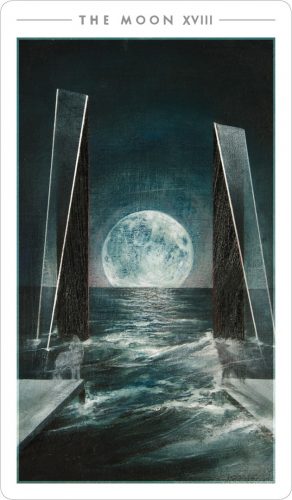
This image reminded me of the Fountain Tarot Moon card, with the two leaning obelisks looking out over tranquil water. Of course, as our Hierophant card is missing the religious leader, this image is lacking the eponymous symbol, but what can I say–I have the soul of a deconstructionist. Or perhaps an imaginist. Not one who takes apart what is there, but one who clearly sees what isn’t there. What about the Moon card can be expressed without Luna herself? The towers in the traditional image create a doorway or threshold through which one must travel into the astral plane, the realm of the imagination, the subconscious, governed by this planetary body. In the standard image the water is foregrounded and a sea creature crawls out of the primal sea, evolution in action. Here, the opening leads not out of but back into the depths of the psyche. The path in the traditional image, leading from the water and rising up and down but ever up into the hills, is expressed here as the invisible path leading from nowhere to nowhere. It is our dream journey into the heart, and only through imagination can we fill the Moon’s misty, blank slate.
If only I had pulled my images from The Science of Beer article, how different this post would be. If I haven’t bummed you out too much, hop on to Jay Cassels’ blog, “Musings Of An Angel.” I’m sure he’ll cheer you up!
PREVIOUS | MASTER LIST | NEXT
Works cited
Junk mail card images: National Geographic, November 2003
Card frame: Darcy Lundgren On Turning Junk Into Artwork, http://www.avenuecalgary.com/April-2014/Darcy-Lundgren-On-Turning-Junk-Into-Artwork/
Reclaiming Power in the 10 of Swords
Ashura 2014: 3 Things You Need To Know About The Islamic Holy Day, http://www.ibtimes.com/ashura-2014-3-things-you-need-know-about-islamic-holy-day-photos-1718761
The Hierophant of Memory and Light
Afghanistan’s Buddhas Rise Again, http://www.theatlantic.com/international/archive/2015/06/3d-buddhas-afghanistan/395576/
Ancient Buddhist scripture fragments discovered in Bamiyan valley caves, http://www.japantimes.co.jp/news/2003/09/10/national/ancient-buddhist-scripture-fragments-discovered-in-bamiyan-valley-caves/#.V2lCVbgrKUk
The Bâmiân Buddhas, http://faculty.fullerton.edu/jsantucci/b%C3%A2mi%C3%A2n_buddhas_exart.htm
Bamiyan Buddhas, https://www.khanacademy.org/humanities/art-asia/south-asia/afghanistan/a/bamiyan-buddhas
Buddhas of Bamiyan, https://en.wikipedia.org/wiki/Buddhas_of_Bamiyan
Preserving Memory of Afghanistan’s Giant Buddhas, http://www.npr.org/2006/12/13/6616167/preserving-memory-of-afghanistans-giant-buddhas
Zeela Nasari, https://twitter.com/ZheelaJ/status/607950827685347328?ref_src=twsrc%5Etfw
The Moon: Back into the Depths
Band-e-Amir, Afghanistan’s first National Park, http://www.worldbulletin.net/afghanistan/168883/band-e-amir-afghanistans-first-national-park
Band-e Amir National Park, https://en.wikipedia.org/wiki/Band-e_Amir_National_Park
Eurasia Overland. Pakistan & Afghanistan: The Khyber Pass and Beyond, https://eurasiaoverland.com/2009/11/09/16iii/
_________________________________________________
Joy Vernon is widely recognized by tarot professionals as an expert tarot teacher and respected community leader. With over twenty years’ experience teaching energetic and esoteric modalities, Joy brings expertise and practiced familiarity to her specialty of esoteric tarot, which layers astrological and qabalistic symbolism onto the traditional tarot structure. Under her leadership, the Denver Tarot Meetup has grown into the most active and one of the largest tarot-specific meetups in the world. Joy works as a psychic and teacher at Isis Books. To learn more, please visit JoyVernon.com.
© 2016 by Joy Vernon. All rights reserved.


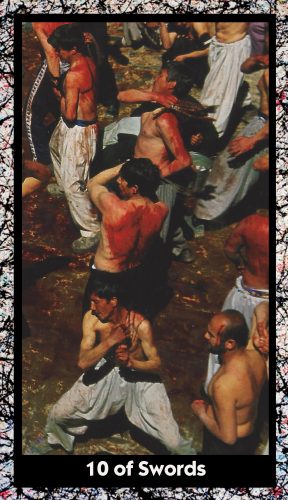
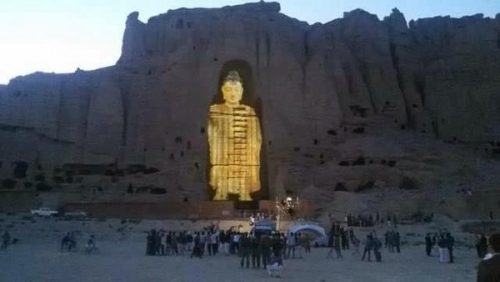
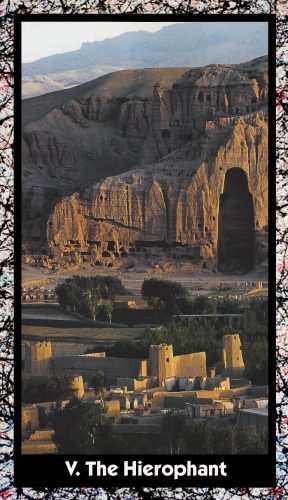
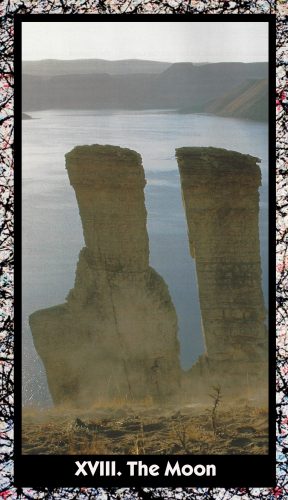
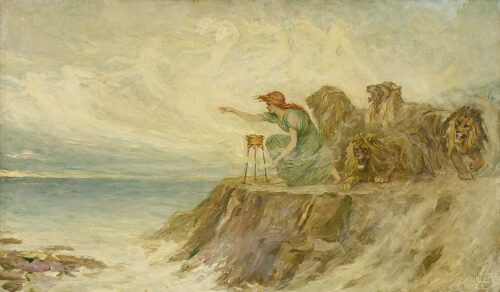





[…] PREVIOUS BLOG | MASTER LIST | NEXT BLOG […]
Excellent choices in imagery and also explanations for making your choices. I believe the Hierophant’s essence continues to permeate its niche.
what wonderful imagery you have chosen for the cards, and a lovely explanation and detail as to why. Really interesting and inspiring, its a deck that if you should decide to manifest I would consider buying.
Thank you! This post was hard to do but I’m happy with how it turned out!
Not at all bummed out… completely fascinating from top to bottom. Great take on 10 of Swords, and the Hierophant… yes… lots to think on there…
Thanks, Karen! It was fascinating for me to learn all about this culture!
Really liked this. The missing Buddha as Hierophant was brilliant.
Thank you, Arwen!
The Hierophant is really captivating, so sad and majestic at the same time! It gave me goosebumps! Love it!
Thank you, Katalin!
Wow, your Hierophant… And your Moon… 🙂 Brilliant ones! How great it would be to go there at Bamiyan one day!
Yes, I had never even considered going to Afghanistan until I started doing this research, but the history of the culture and beauty of the land both provide strong draws. Still, a dangerous place to go, sadly.
Wow! You’ve given some powerful and profound insights into these cards.
Thank you, Kristen!
Lovely images and fascinating back stories. Weren’t you tempted to Photoshop in a Moon for that card?
Yes, I was tempted! But I had run out of time. 🙂
Deep philosophical journey reading and re-reading your explanations…I truly resonated with the idea of the Hierophant, and the vision of the Moon; you’ve made me think deeply, Joy, and before my first cup of coffee!! Thank you!
Thank you, Aisling! I’m so glad you resonated with these!
Powerful images, indeed. My favourite was the Hierophant, an archetype I’ve sometimes had trouble with. As you say, though, seeing his absence is a stark reminder of the better qualities, the enduring nature, the spirituality that brings communities together. Beautiful post!